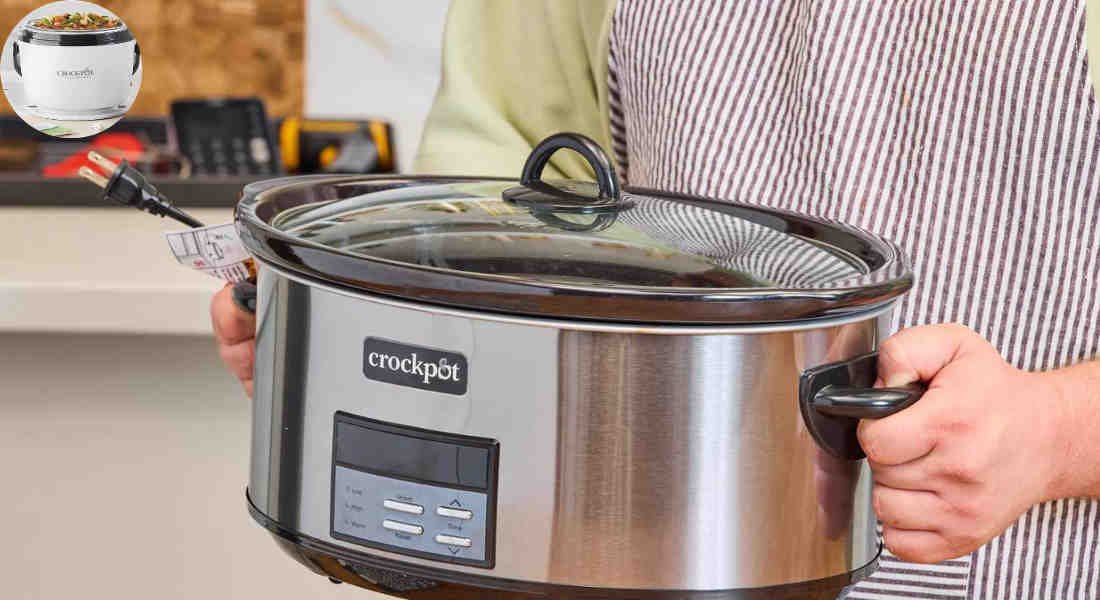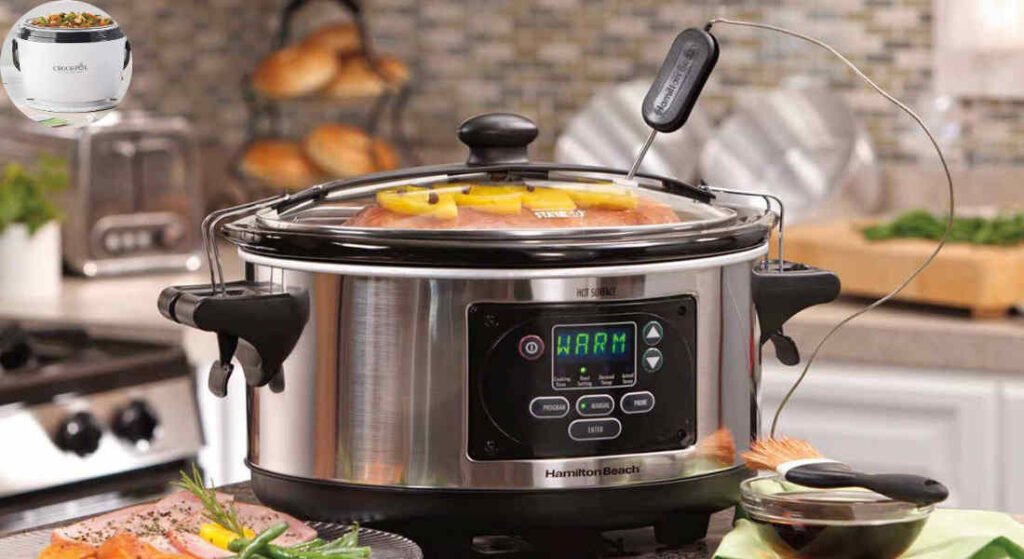A common question among home cooks is whether a Crock Pot, or slow cooker, significantly heats up your house while in use. Unlike ovens or stovetops, slow cookers operate at low temperatures and are designed to keep heat contained within the cooking vessel. They emit only a small amount of heat externally—comparable to one or two incandescent light bulbs—and thus do not noticeably raise room temperature. This makes them an ideal appliance for cooking without adding extra warmth to your home, even in hot weather. While all electrical energy used by a slow cooker ultimately dissipates as heat, the well-insulated design ensures most of that heat stays inside the pot to cook food rather than warming the surrounding air. Therefore, a Crock Pot does not really heat up your house in any meaningful way.
The Crock Pot’s Design and Functionality
The Crock Pot, also known as a slow cooker, boasts a simple yet effective design. Its outer shell is typically made from durable materials that can withstand high temperatures while remaining cool to the touch. Inside, you’ll find a ceramic or stoneware pot that’s adept at evenly distributing heat.
Functionality lies in its ability to cook food slowly over several hours. This method allows flavors to meld beautifully and results in tender dishes without constant supervision.
A few buttons or dials control cooking times and temperature settings, making it user-friendly for busy lifestyles. The lid seals tightly during cooking, trapping moisture and heat inside.
This unique design not only makes meal prep effortless but ensures energy efficiency too. Unlike conventional ovens that require preheating and consume more power, the Crock Pot offers an economical alternative for delicious home-cooked meals.
Understanding Heat Transfer in Cooking Appliances
Thermal energy is transferred from one place to another in cooking appliances.It’s a crucial concept that impacts how effectively food is cooked.
In most cooking devices, heat transfer occurs via conduction, convection, and radiation. Conduction happens when direct contact transfers heat between surfaces—think of your frying pan on a stovetop.
Convection circulates hot air or liquid around the food, ensuring even cooking. This process is prominent in ovens and slow cookers like Crock Pots.
Radiation involves infrared waves transferring heat through space without needing direct contact. While it plays less of a role in traditional cooking methods, you can find it in microwave ovens.
Understanding these mechanisms helps consumers choose the right appliance for their needs while being mindful of efficiency and comfort within their homes.
You may also read (discover how an attic fan transforms home comfort).
Comparing Crock Pot Energy Usage to Other Appliances
When we talk about energy consumption, it’s essential to compare the Crock Pot with other common kitchen appliances.
A standard slow cooker typically uses around 70-250 watts of power while cooking. This is relatively low compared to conventional ovens, which can draw up to 3,000 watts or more depending on the setting.
Microwaves also fall short in terms of prolonged usage; they operate at about 600-1,200 watts but are used for shorter bursts. The Crock Pot’s efficiency shines particularly when preparing meals over several hours.
Even electric stovetops consume higher wattage for a quicker cooking process. When you think about it, a Crock Pot runs efficiently and doesn’t require constant monitoring like frying pans or grills do.
This makes it an excellent choice for those looking to save on energy bills without sacrificing flavor or convenience in their recipes.
Do Crock Pots Actually Heat Up Your House?
Crock Pots, known for their convenience and delicious slow-cooked meals, often raise the question: do they heat up your house? Unlike traditional ovens that can crank up indoor temperatures, Crock Pots operate differently.
They use low wattage to maintain a steady temperature over several hours. This efficient design means they generate less ambient heat compared to larger appliances. However, some warmth is inevitable.
In smaller spaces or during hot weather, you might notice an increase in room temperature. The gentle warmth radiating from the appliance could contribute slightly to heating your environment.
It’s important to consider ventilation and placement too. Keeping it away from direct sunlight or other heat sources can help mitigate any additional warmth in your home while cooking those savory dishes.
You may also read (does a fireplace heat the whole house).
Tips for Using a Crock Pot Without Increasing Indoor Temperature
Using a Crock Pot can be an efficient way to cook delicious meals without heating up your kitchen too much. However, if you’re concerned about indoor temperatures while using one, there are several tips you can follow.
First, consider the placement of your Crock Pot. If possible, set it up in a well-ventilated area or even outside on a covered porch during cooler weather. This helps direct any heat away from your living spaces.
Next, choose recipes that require longer cooking times but lower heat settings. Low and slow not only enhances flavors but also minimizes energy use and excess heat generation.
Chop vegetables and marinate meats the night before so you can simply plug in the Crock Pot when you’re ready to start cooking. This prevents prolonged usage which means less cumulative heat output over time.
Remember that most models will retain their heat effectively once they have reached desired cooking temps. So avoid lifting the lid unnecessarily as each peek extends cooking time and increases thermal release into your home environment.
By following these simple strategies, it’s totally feasible to enjoy classic crock pot dishes without turning up the thermostat at home—keeping comfort levels just where you want them!
You may also read (does a dehumidifier help cool your house).

